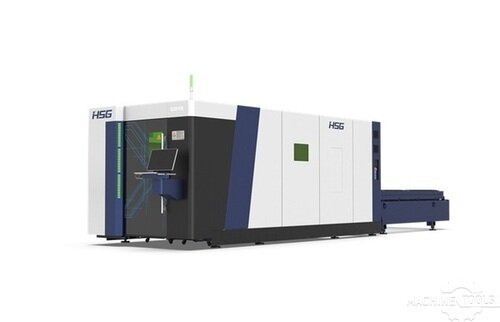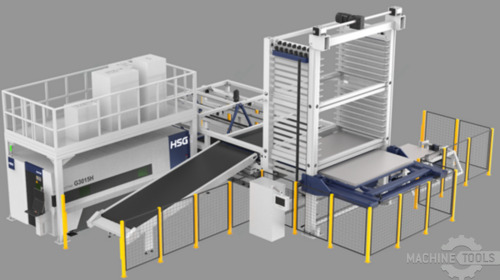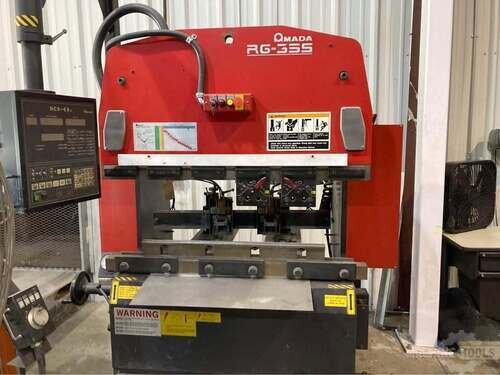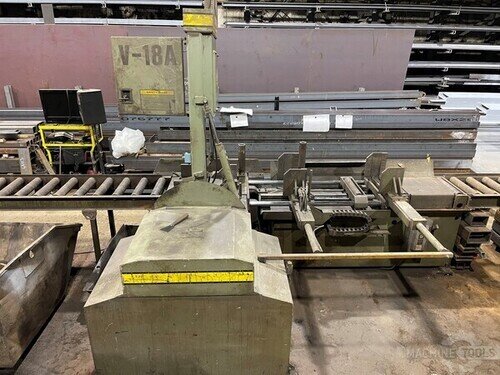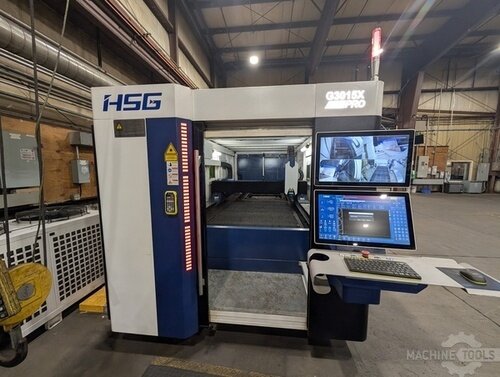In the ever-evolving landscape of manufacturing, selecting the right equipment is crucial for maintaining competitive advantage and ensuring operational efficiency. As the VP of Sales at Mac-Tech, I have had the privilege of guiding numerous clients through the intricate process of choosing the ideal flat laser machine for their manufacturing needs. My commitment to honesty, extensive experience, and consultative approach have always been at the forefront of my interactions. This article aims to provide a comprehensive guide to help you make an informed decision when selecting a flat laser machine, focusing on key features, cost considerations, maintenance, and best practices.
Understanding Flat Laser Machines in Manufacturing
Flat laser machines have revolutionized the manufacturing industry by offering unparalleled precision and efficiency. These machines utilize laser technology to cut, engrave, or mark flat materials such as metal, plastic, and wood. The precision of laser cutting ensures minimal material wastage and high-quality finishes, making it an indispensable tool for manufacturers aiming for excellence.
The versatility of flat laser machines allows them to be used across various industries, from automotive to aerospace, and even in custom fabrication shops. Their ability to handle different materials and thicknesses with ease makes them a valuable asset in any manufacturing setup. Understanding the specific needs of your industry and the materials you work with is the first step in selecting the right machine.
Moreover, the integration of automation in flat laser machines has significantly enhanced productivity. Automated loading and unloading systems, along with advanced software for design and cutting, streamline the manufacturing process, reducing downtime and increasing throughput. This level of automation is particularly beneficial for high-volume production environments.
Lastly, the precision and speed of flat laser machines contribute to improved product quality and consistency. By minimizing human error and ensuring exact cuts, these machines help manufacturers meet stringent quality standards and deliver products that meet or exceed customer expectations.
Key Features to Look for in a Flat Laser Machine
When selecting a flat laser machine, several key features should be considered to ensure it meets your manufacturing needs. One of the most critical features is the power of the laser. Higher wattage lasers can cut through thicker materials more quickly, but they also come with higher energy consumption. Balancing power requirements with operational costs is essential.
Another important feature is the machine’s cutting speed and accuracy. Look for machines that offer high-speed cutting without compromising on precision. Advanced motion control systems and high-quality optics play a significant role in achieving this balance. Additionally, consider machines that offer adjustable settings to cater to different materials and thicknesses.
The size of the worktable is another crucial factor. Ensure that the machine can accommodate the largest material sheets you plan to work with. A larger worktable provides greater flexibility and reduces the need for repositioning materials, which can save time and improve efficiency.
Lastly, consider the software that comes with the machine. User-friendly software with robust design and cutting capabilities can significantly enhance productivity. Look for software that offers features like nesting, which optimizes material usage, and compatibility with various file formats to ensure seamless integration with your existing design tools.
Comparing Different Types of Flat Laser Machines
Flat laser machines come in various types, each with its own set of advantages and limitations. CO2 lasers are among the most common and are known for their versatility in cutting a wide range of materials, including non-metals. They are ideal for applications that require high precision and smooth edges.
Fiber lasers, on the other hand, are known for their efficiency and speed, particularly when cutting metals. They offer higher energy efficiency and lower maintenance costs compared to CO2 lasers. Fiber lasers are also more compact, making them suitable for smaller manufacturing spaces.
Another type to consider is the crystal laser, which includes Nd:YAG and Nd:YVO lasers. These are typically used for applications requiring very high power and precision, such as in the aerospace and medical device industries. However, they tend to be more expensive and require more maintenance.
Hybrid laser machines combine the features of CO2 and fiber lasers, offering a balance between versatility and efficiency. They can handle a broader range of materials and are suitable for manufacturers who need the flexibility to switch between different types of cutting tasks. Understanding the specific requirements of your manufacturing process will help you choose the right type of laser machine.
HSG G3015X 6KW
HSG-G3015H V2.0-STORE PRO3015 10 SHELF
Evaluating the Cost and ROI of Flat Laser Machines
Investing in a flat laser machine is a significant financial decision, and it’s essential to evaluate the cost and potential return on investment (ROI). The initial purchase price of the machine is just one aspect of the total cost. Consider additional expenses such as installation, training, and any necessary modifications to your facility.
Operational costs, including energy consumption, maintenance, and consumables like laser lenses and nozzles, should also be factored into your evaluation. High-efficiency machines may have a higher upfront cost but can result in lower operational expenses over time, leading to better ROI.
To accurately assess ROI, consider the machine’s impact on productivity and quality. Faster cutting speeds and higher precision can lead to increased output and reduced waste, directly contributing to higher profitability. Additionally, the ability to take on more complex and higher-value projects can open new revenue streams.
Lastly, consider the machine’s lifespan and potential resale value. High-quality machines from reputable manufacturers tend to have longer lifespans and retain their value better. This can further enhance your ROI by reducing the need for frequent replacements and providing a potential source of capital if you decide to upgrade in the future.
Maintenance and Support for Flat Laser Machines
Proper maintenance is crucial for ensuring the longevity and optimal performance of your flat laser machine. Regular cleaning and inspection of critical components, such as the laser lens and mirrors, can prevent buildup and ensure consistent cutting quality. Establishing a routine maintenance schedule can help identify and address issues before they lead to costly downtime.
In addition to routine maintenance, having access to reliable technical support is essential. Choose a manufacturer or supplier that offers comprehensive support services, including remote diagnostics, on-site repairs, and readily available spare parts. This can significantly reduce downtime and keep your operations running smoothly.
Training for your operators and maintenance staff is another critical aspect. Proper training ensures that your team can operate the machine efficiently and perform basic maintenance tasks. Many manufacturers offer training programs as part of the purchase package, which can be a valuable resource for your team.
Lastly, consider the availability of software updates and upgrades. As technology evolves, software updates can enhance the functionality and performance of your machine. Ensure that your supplier provides regular updates and support for integrating new features, which can help you stay competitive in the market.
Making the Final Decision: Best Practices and Tips
Making the final decision on which flat laser machine to purchase involves careful consideration of several factors. Start by clearly defining your manufacturing needs and objectives. Understanding the specific requirements of your production process will help you narrow down your options and focus on machines that meet your criteria.
Conduct thorough research and compare different models and manufacturers. Look for reviews and testimonials from other users in your industry to gain insights into the performance and reliability of the machines you are considering. Visiting trade shows and manufacturer facilities can also provide valuable hands-on experience and help you make an informed decision.
Engage in a consultative approach with your supplier. A reputable supplier will take the time to understand your needs and provide tailored recommendations. They can also offer demonstrations and trials to help you evaluate the machine’s capabilities in real-world scenarios.
Finally, consider the long-term implications of your purchase. Evaluate the total cost of ownership, including maintenance and operational costs, and assess the potential ROI. Ensure that the machine you choose aligns with your long-term business goals and can adapt to future technological advancements.
FAQ
What materials can flat laser machines cut?
Flat laser machines can cut a wide range of materials, including metals, plastics, wood, and composites. The specific materials a machine can handle depend on the type of laser and its power.
How do I determine the right laser power for my needs?
The right laser power depends on the thickness and type of material you plan to cut. Higher wattage lasers can cut thicker materials more quickly, but they also consume more energy. Consulting with a supplier can help you determine the optimal power for your applications.
What are the maintenance requirements for flat laser machines?
Regular maintenance includes cleaning the laser lens and mirrors, inspecting and replacing consumables, and ensuring proper alignment of components. Establishing a routine maintenance schedule and having access to technical support can help maintain optimal performance.
How do I evaluate the ROI of a flat laser machine?
Evaluate the ROI by considering the initial purchase price, operational costs, impact on productivity and quality, and potential revenue from new projects. High-efficiency machines with lower operational costs can offer better ROI over time.
Can flat laser machines be integrated with automation systems?
Yes, many flat laser machines can be integrated with automation systems for loading and unloading materials, as well as advanced software for design and cutting. This integration can significantly enhance productivity and reduce downtime.
What should I look for in a supplier?
Look for a supplier with a strong reputation, comprehensive support services, and a consultative approach. A good supplier will take the time to understand your needs and provide tailored recommendations, as well as offer training and technical support.
Are there financing options available for purchasing flat laser machines?
Many suppliers offer financing options to help manage the upfront costs of purchasing a flat laser machine. It’s worth discussing financing options with your supplier to find a solution that fits your budget.
Selecting the ideal flat laser machine for your manufacturing needs is a critical decision that can significantly impact your operational efficiency and product quality. By understanding the key features, comparing different types, evaluating costs, and considering maintenance and support, you can make an informed choice that aligns with your business goals. At Mac-Tech, we are committed to providing honest, expert advice to help you navigate this process. For more personalized guidance, please reach out to us.
Get Weekly Mac-Tech News & Updates

